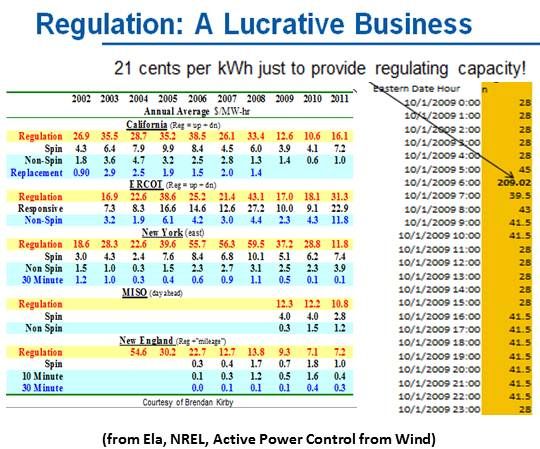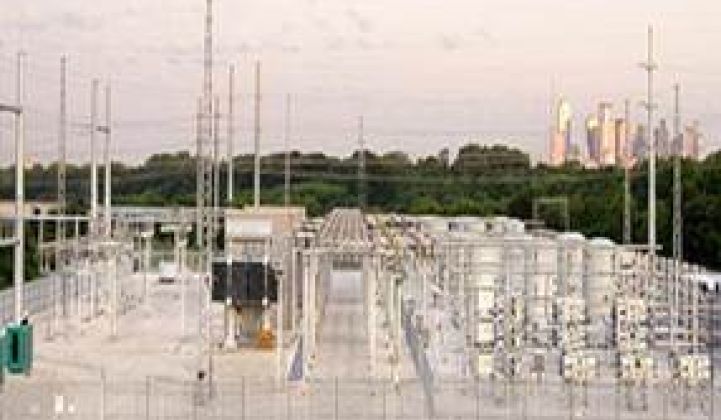The two traditional excuses for not adding more wind and solar into grid operations have been that they could not be called on (“dispatched”) when energy was needed and they were too expensive (“uneconomic”). But grid operators around the U.S. have begun to discover that neither is necessarily true.
“The New York ISO was the first to implement dispatchable intermittent resources in allowing wind to participate in economic dispatch and congestion management. It was thought of then as crazy to use wind for grid reliability,” said National Renewable Energy Lab (NREL) Senior Research Engineer Erik Ela. “Now almost every ISO in the U.S. uses wind this way. And we can go further and use more of the flexibility wind has to provide more support to the grid.” Ela said utility-scale solar can eventually do the same.
Researchers at NREL, the Electric Power Research Institute (EPRI) and the University of Colorado are working to demonstrate how the unique characteristics of wind and solar can, much like traditional generation, perform Active Power Control (APC) to support the grid. Researchers are especially focusing, Ela said, on two areas of APC, regulating reserves and primary frequency control.
“APC is control of power output to balance generation and load,” Ela explained. “Providing dispatch is one way of doing that. It can even do that in the faster time scales.” APC can support the grid during specific events such as when a large generator goes offline and the lost supply has to be replaced, Ela said. It can also steady the grid as load and renewables vary and require balancing.
"Grid operators would like to have more support for transmission line overload, voltage drops, and frequency variations,” Ela said, but don’t typically ask that renewables provide it, and regulators have not imposed the requirement to use renewables in that way.
Wind turbine manufacturers say they can provide the capability for renewables to provide APC services but see no demand for it from renewables developers.
Renewables developers don’t see any point in driving up costs by building in the capability to provide a service for which there is no demand from grid operators.
Regulators see no point in requiring grid operators to buy a service from renewables they may get for free from traditional generators.
“We are doing research on ways to connect these perspectives,” Ela said.

Regulating reserves “correct for the energy imbalance within economic dispatch intervals,” Ela explained. “It is a little faster than normal dispatch. It uses a signal that comes directly from the system operator on how a generator’s output should be changed on a minute-to-minute time frame.” All U.S. balancing areas, RTOs/ISOs, and vertically integrated utilities have “a certain amount of capacity they use as regulating reserve,” Ela explained.
Studies have shown wind plants can provide this service “faster and in some ways more accurately on these time scales than conventional generation,” Ela said, because “conventional generation has thermal time constants that slow down this kind of response whereas wind is all power electronics: You need that response, you get it.”
The price for meeting this grid need can be very high in ancillary services markets. Ela noted an example where the market was paying $0.21 per kilowatt-hour ($209.02 per megawatt-hour) for regulation reserves.
“There are often times where the market is paying more for this service than for energy and as more renewables are integrated into the system,” Ela said, “that is going to happen more often.”
A simulation in which wind was allowed to provide regulation, he said, showed “an increase in revenue of $4 million for all the wind plants for a two-month period for the California ISO.” And, he added, “there are a lot of things that can happen that could make that revenue more.”
Primary frequency control is needed, Ela said, when a large generator goes offline and everything connected “will synchronously start to slow down to provide the power compensation. That slows the frequency. If the frequency slows too much, there will be load shedding and brownouts to avoid a major catastrophic blackout.”
Primary frequency response stabilizes frequency slowing.
Studies show that with up to 40 percent wind in a transmission system, the grid’s performance is degraded if there is inadequate frequency response from wind but “in simulations in which wind provided frequency response, it improves performance pretty significantly”
There is a major economic factor separating regulation reserves and frequency response, Ela said. “There is no ancillary service market for frequency response. Operators and generators are doing this without any market incentive.”
But, he said, the supply for frequency response “keeps declining every year, and many believe there should be an incentive for resources to provide this. Otherwise, this decline might continue.”
“We have to ensure this primary frequency response -- this other control -- has incentives,” Ela said, “and you can’t prohibit anybody from providing those.”
The bottom line on using renewables for APC, Ela said, is that additional revenues per generator “could possibly be very high if they choose to participate and if market rules are correctly designed.” And renewables can behave even better than other generators. “Studies may show wind providing the finest scales of active power control capability on a better quality than other generation and being a supporter to the grid, rather than a detriment.”




